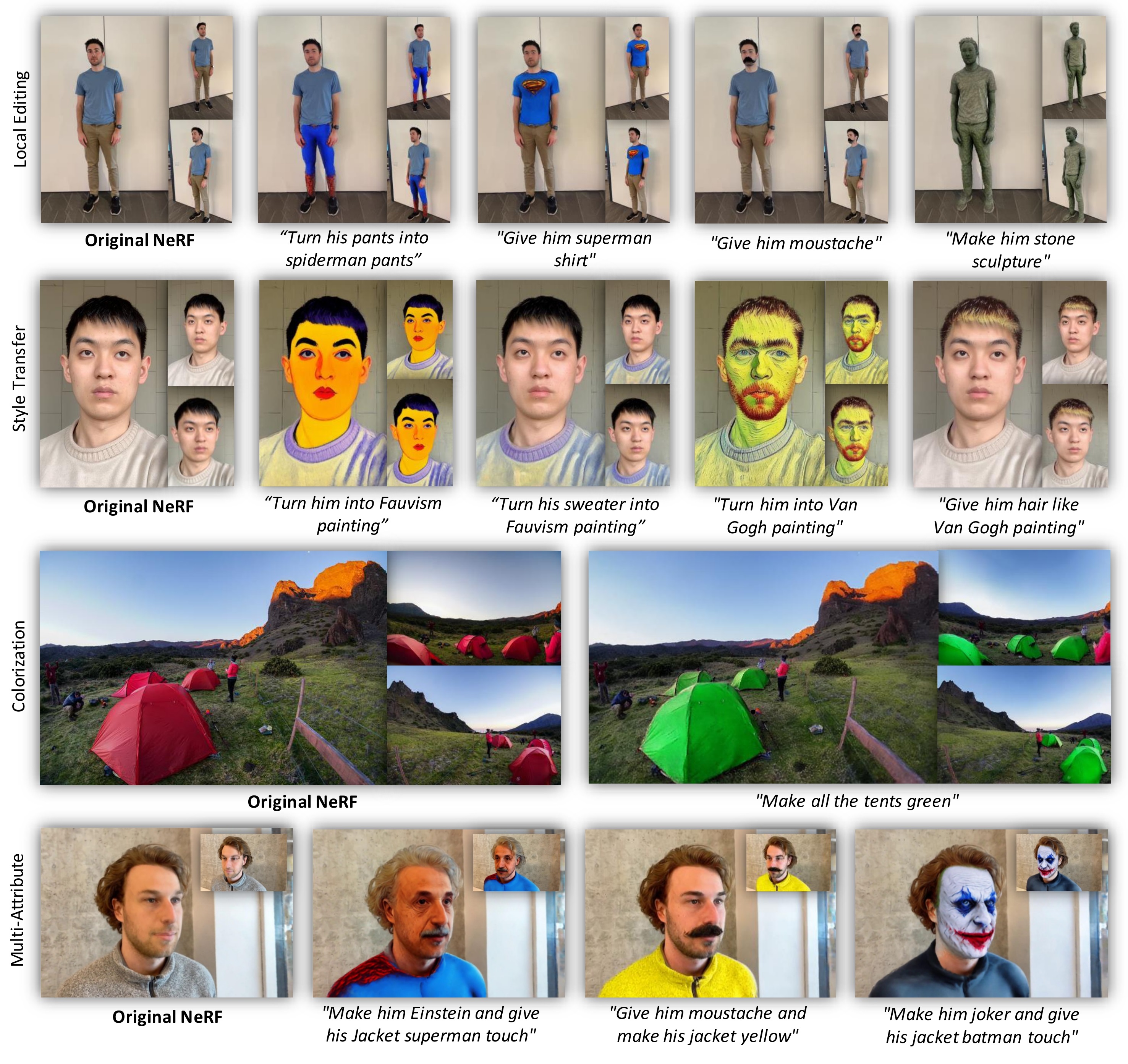
While neural fields have made significant strides in view synthesis and scene reconstruction, editing them poses a formidable challenge due to their implicit encoding of geometry and texture information from multi-view inputs. In this paper, we introduce LatenEditor, an innovative framework designed to empower users with the ability to perform precise and locally controlled editing of neural fields using text prompts. Leveraging denoising diffusion models, we successfully embed real-world scenes into the latent space, resulting in a faster and more adaptable NeRF backbone for editing compared to traditional methods. To enhance editing precision, we introduce a delta score to calculate the 2D mask in the latent space that serves as a guide for local modifications while preserving irrelevant regions. Our novel pixel-level scoring approach harnesses the power of InstructPix2Pix (IP2P) to discern the disparity between IP2P conditional and unconditional noise predictions in the latent space. The edited latents conditioned on the 2D masks are then iteratively updated in the training set to achieve 3D local editing. Our approach achieves faster editing speeds and superior output quality compared to existing 3D editing models, bridging the gap between textual instructions and high-quality 3D scene editing in latent space.
@misc{khalid2023latenteditor,
title={LatentEditor: Text Driven Local Editing of 3D Scenes},
author={Umar Khalid and Hasan Iqbal and Nazmul Karim and Jing Hua and Chen Chen},
year={2023},
eprint={2312.09313},
archivePrefix={arXiv},
primaryClass={cs.CV}
}